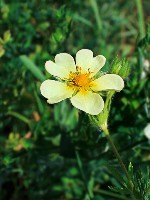Mon-Fri 9am - 5pm Mountain time
Pennsylvania Cinquefoil vs Blue Flax
Potentilla pensylvanica
Linum lewisii
NOT AVAILABLE THIS SEASON - MIGHT RETURN
NOT AVAILABLE THIS SEASON - MIGHT RETURN
Pennsylvania Cinquefoil is well suited for naturalisation projects as it is a wildflower native to North America. It is widespread and can be found growing in rocky soils at higher elevations in the mountains and foothills, as well as the dry prairies. The Pennsylvania Cinquefoil is capable of growing in cold, harsh conditions. The bright yellow flowers are found at the top of long stalks in small dense clusters and are ideal for attracting pollinators.
Blue Flax is a native perennial wildflower known for its blue to violet flowers. Each flower lasts just a single day, but new blooms appear continuously, providing weeks of colour. This extended flowering period provides a reliable display from late spring into summer and attracts a variety of pollinators.
They can self-seed readily, so removing spent blooms helps manage their spread. Birds feed on the seeds, and when cooked, they are edible and are described as having a mild, nutty flavour. The plant grows in loose clumps with slender stems and fine foliage. Young plants are leafy, but as they mature, most leaves are shed.
Blue Flax grows well in a wide range of soils, including poor or sandy conditions, and is drought-tolerant once established. The deep root system helps to stabilize soil and prevent erosion. They are well-suited for pollinator gardens, restoration, naturalization, and xeriscaping projects.
Pennsylvania Cinquefoil Quick Facts
Blue Flax Quick Facts
Toxicity: toxic to some animals, raw seed toxic

